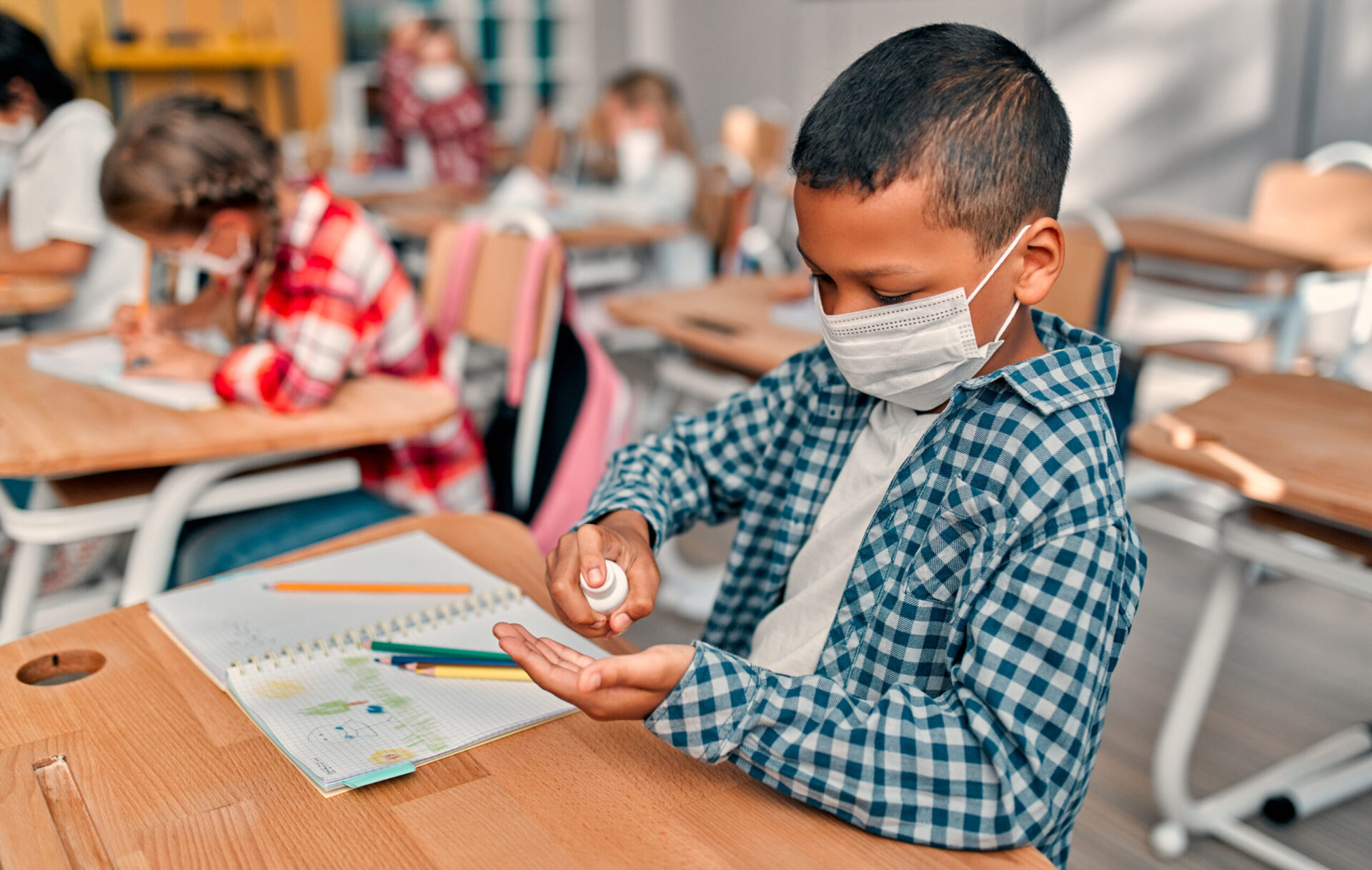Children who contract COVID-19 can experience persistent symptoms known as long-haul COVID-19 after recovering from the virus and obtaining a negative COVID test result. Symptoms of long-haul COVID-19 include energy levels that are lower than normal, difficulty breathing, brain fog, changes in smell or taste, and headaches. Although these symptoms are more common among adults and result in a quick and full recovery among children, students who do experience long-haul COVID-19 may face learning disadvantages in a classroom setting that lacks the proper strategies to support them.
Constant changes, such as masks and modifications to group activities, have been made in the classroom because of the COVID-19 pandemic.
Image Source: Halfpoint Images
Psychology professors at the University of Dayton argue that schools should adopt techniques that are commonly used to accommodate students with concussions to help students who continue to experience long-term symptoms of COVID-19. One technique is referred to as collaborative care, where parents, teachers, and medical professionals communicate with a school nurse, advisor, or psychologist to provide assistance to children. Open communication between these various groups allows for a child to succeed academically while recovering from COVID symptoms because teachers are more aware of the health concerns the student is facing. A few accommodations that can help students include flexible deadlines and schedules with breaks, adjusted assignments to prevent disadvantages among students with memory issues, and planned extracurricular activities that do not exert cognitive and physical strains on students. These adjustments place less stress on students by minimizing fatigue and potential headaches from hours of constant cognitive effort. Additionally, decreasing physically intensive activities can assist students who have shortness of breath or extreme body aches. The goal of these changes is to recognize that COVID symptoms may affect students in different ways and to ease educational challenges made more difficult by long-haul COVID-19.
There is no set amount of time for which these accommodations should be offered to students, but rather, each student’s needs should be evaluated by the team of parents, teachers, medical professionals, and school administrative staff. By acknowledging how COVID-19 has affected students, changes in the classroom can be made accordingly to assist students and provide efficient learning.
Featured Image Source: Vasyl










